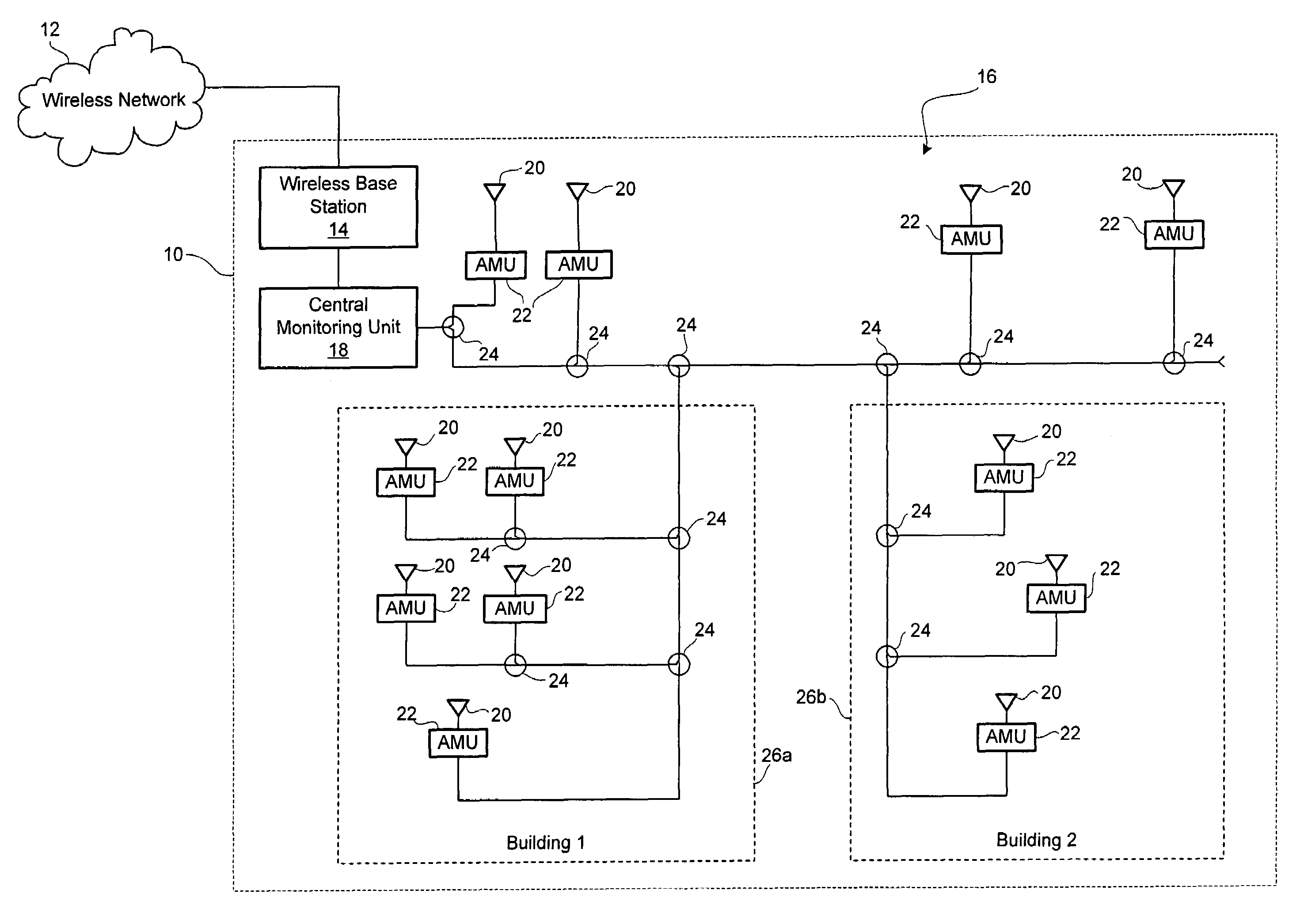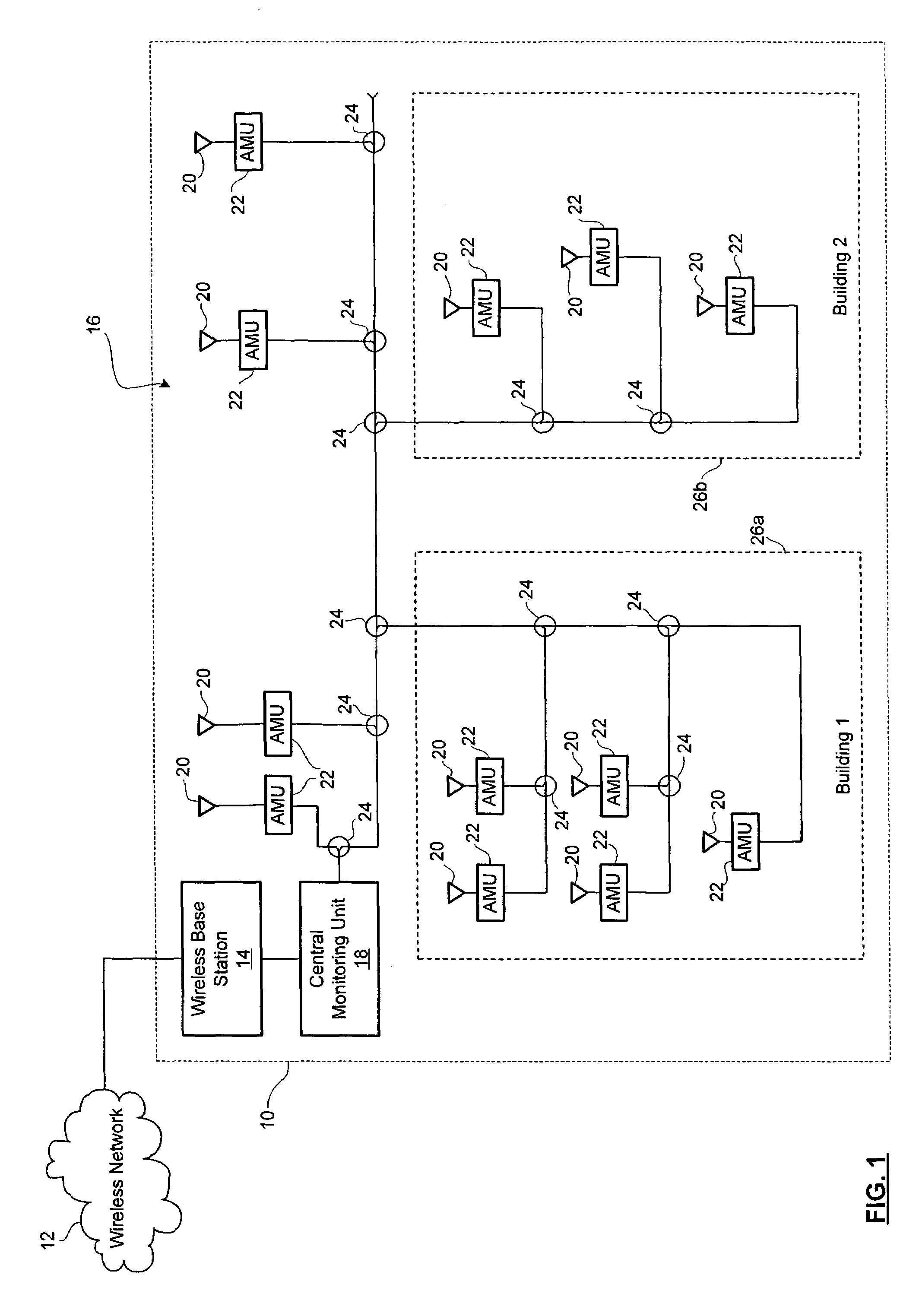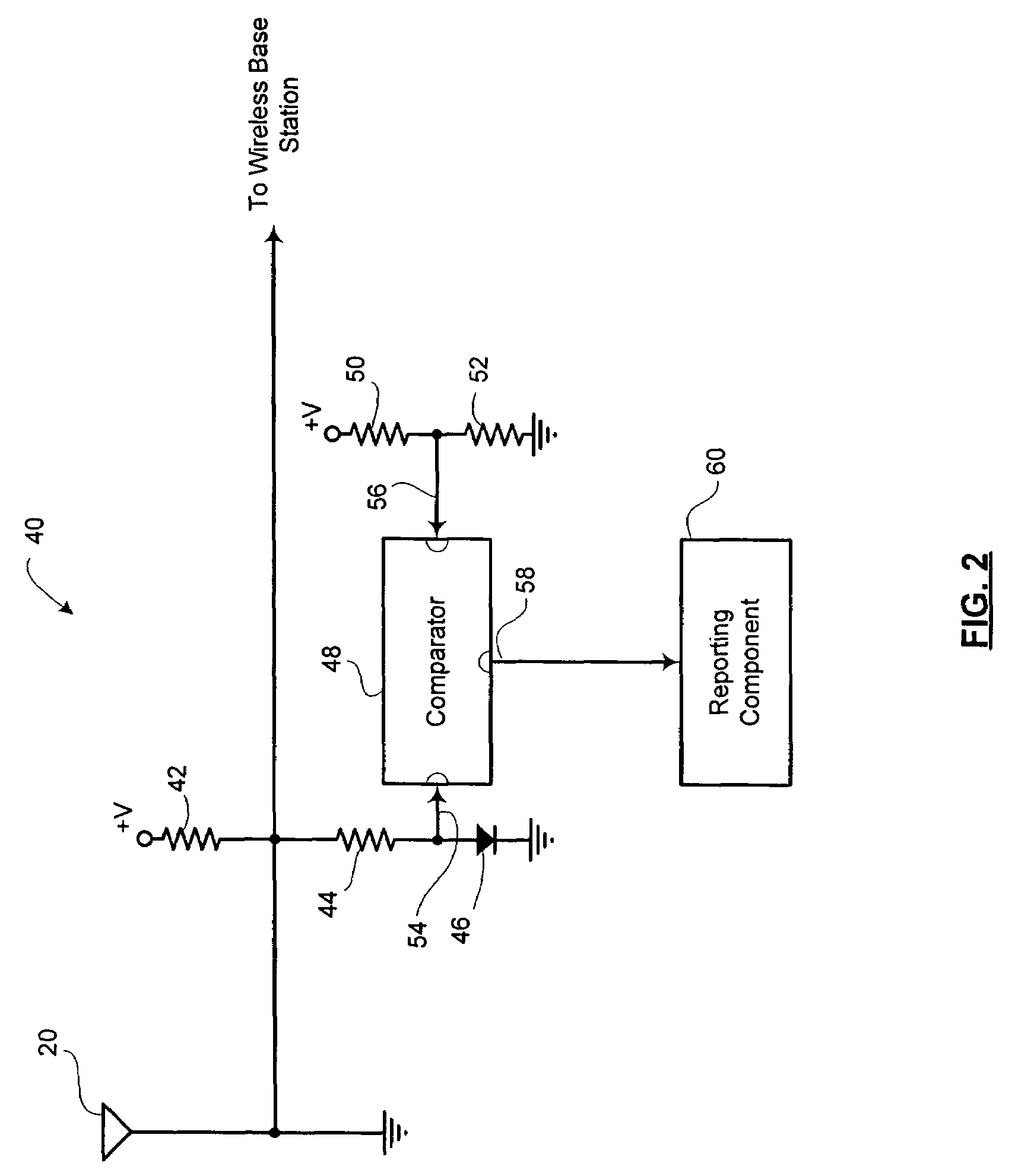Fault monitoring in a distributed antenna system
a distributed antenna and fault monitoring technology, applied in antennas, transmission, modulation, etc., can solve the problems of significant likelihood that one or more antennas or cables may be disconnected or severed, and the loss of service in a section of the facility
- Summary
- Abstract
- Description
- Claims
- Application Information
AI Technical Summary
Benefits of technology
Problems solved by technology
Method used
Image
Examples
Embodiment Construction
[0015]Reference is first made to FIG. 1, which shows a block diagram of a system for antenna fault monitoring in accordance with the present invention. A facility 10 has a wireless base station 14, which is coupled to a wireless network 12. The wireless network 12 may be a cellular network, a PCS network, a paging network, or other wireless communication network for interfacing with mobile devices. The wireless network 12 may operate using AMPS, DAMPS, NADC, CDMA, TDMA, GSM, iDEN or other modulation protocols.
[0016]The facility 10 may be an indoor facility, an outdoor facility or a mixture of enclosed and open-air spaces. Without limiting the generality of the foregoing, the facility 10 may for example, be a shopping centre, an underground concourse, a subway system, a stadium, a hotel, an office tower, an entertainment center, or a business or industrial complex. In the embodiment shown in FIG. 1, the facility 10 includes an exterior area, a first building 26a and a second building...
PUM
 Login to View More
Login to View More Abstract
Description
Claims
Application Information
 Login to View More
Login to View More - R&D
- Intellectual Property
- Life Sciences
- Materials
- Tech Scout
- Unparalleled Data Quality
- Higher Quality Content
- 60% Fewer Hallucinations
Browse by: Latest US Patents, China's latest patents, Technical Efficacy Thesaurus, Application Domain, Technology Topic, Popular Technical Reports.
© 2025 PatSnap. All rights reserved.Legal|Privacy policy|Modern Slavery Act Transparency Statement|Sitemap|About US| Contact US: help@patsnap.com



